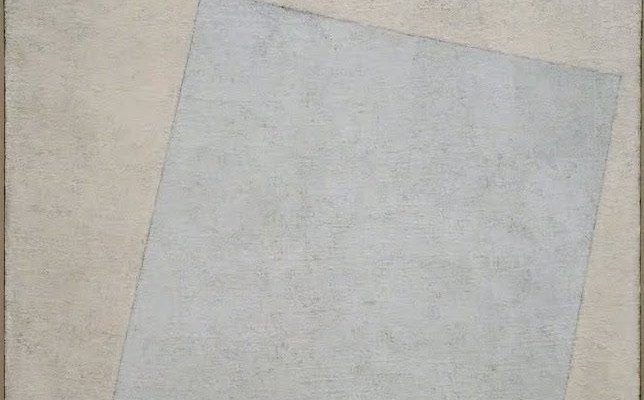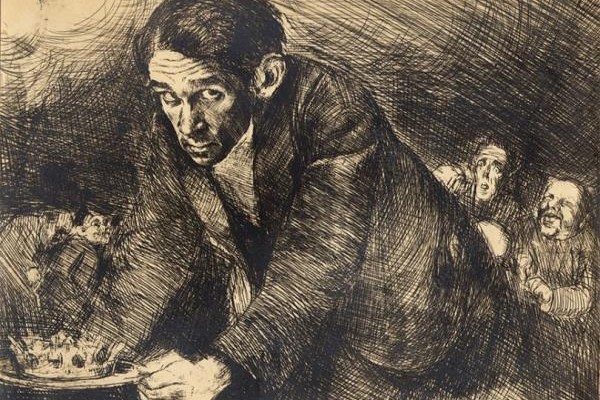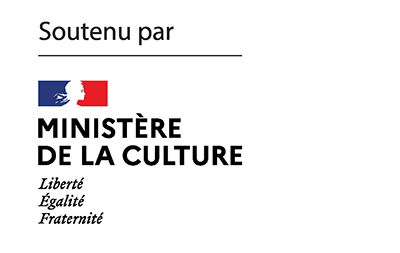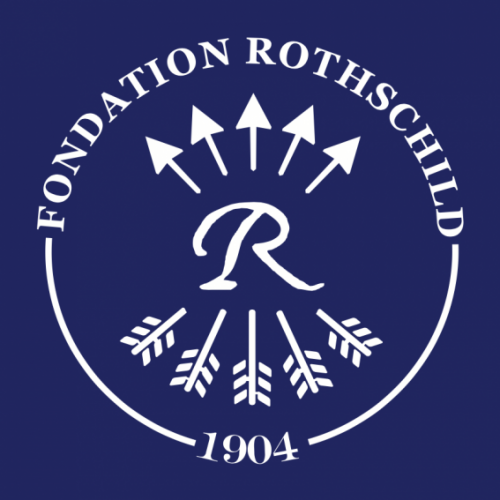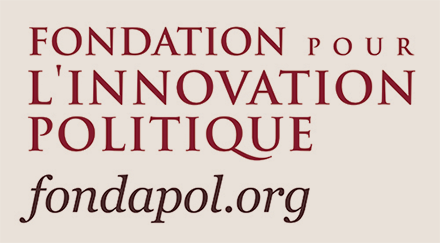The book by historians Jean-Frédéric Schaub and Silvia Sebastiani – Race et histoire dans les sociétés occidentales (XVe-XVIIIe siècle) [Race and History in Western Societies (15th-18th centuries)] – intersects with many issues familiar to readers of Revue K. It recounts the construction of the concept of “race”, as it plays out in racist thought, as a process spanning several centuries, from the imperialist Ancien Régime to the modern period. It thus offers a much richer history of racism than those often limited to the scientistic theories of the late 19th century. Above all, the book places the “Jewish question” at the heart of its history of the concept of race: election, obstinacy and the invisibility of differences are all problems that Christian societies have encountered in their relationship with the Jews, and whose mark racism bears. Interview with the authors.
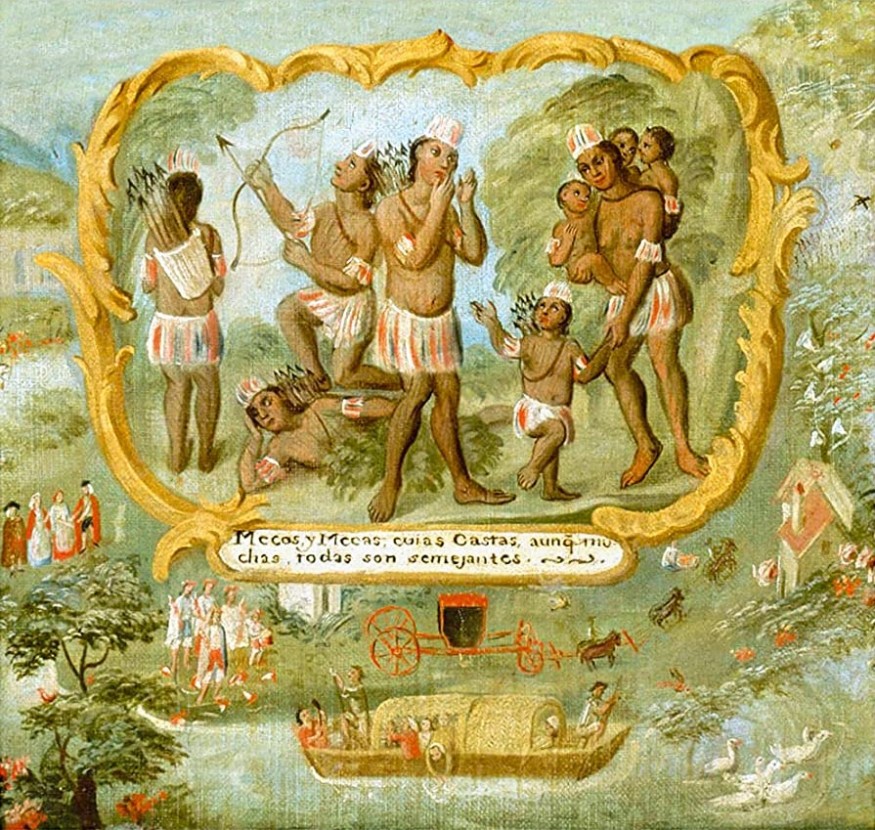
Revue K.: Your book traces the history of the concept of “race” from a very broad perspective. You show how it was formed in pre-modern times, which you begin to date with the expulsion of the Jews from Spain. We then witness an initial shift: a concept initially defined in terms of the self-attribution of positive virtues – “race” as a quality of nobility – gradually becomes a negative concept, stigmatizing and producing inferiorization. What we understand from reading your book is that this shift is linked to a new problem facing certain societies: the problem of managing social mobility. It’s as if the concept of “race” were beginning to be mobilized in a negative way to prevent certain strata of society from merging, so to speak, into the majority society, with the possibilities of social ascension that integration into the majority society allows. Or, to put it another way, “race” allows us to produce new distinctions that are tantamount to blocking mobility. It is gradually imposing itself as the right means for certain social strata, for the state, and for parts of society, to control “the time, the delay and the rhythm of mobility” as you put it. This is a very interesting hypothesis, and it raises a number of questions that we’re going to address in this interview: What has happened over the last three centuries that has led to this issue of temporizing integration? Why did we resort to a natural concept and not a social one to regulate social mobility? And above all, how was this concept of race constructed, with reference to which groups, etc.? But first, we’d like to know how you came to formulate this general hypothesis?
Jean-Frédéric Schaub: Our work is based on the idea, if not of an anthropological invariant, at least of a historical structure in which the relationship between the same and the other is never binary but ternary. Social life is not made up of rich and poor, but of rich, poor and nouveau riche; it is not made up of nobles and commoners, but of nobles, commoners and the recently ennobled; it is not made up of free men and slaves, but of free men, slaves and former slaves ; it’s not made up of Jews and Christians, but of Christians without Jewish origins, and of Jews and Christians with Jewish origins; it’s not made up of colonizers and colonized, but of colonizers, colonized and mixed-race people. We find this ternarity, i.e. a time of waiting, which only the dominant pole of society can decide is over, and those who remain in this gray zone can be admitted to the side of the dominant pole. One of the most powerful elements taken into account in this decision was blood, i.e. “race”.
Election and invisibility: the antisemitic matrix of racism
Revue K.: “Blood” and “race” are “naturalizations” of social differences that still seem metaphorical between the 15th and 17th centuries. For this period, these concepts were still aimed at “fixing” populations, without the idea of a “nature” or “substance” that would be embodied in “race”. Was “race” in its early days a concept that made it possible to regulate society, but which people basically didn’t believe in? Was it a kind of imaginary marking that was socially useful, but which everyone knew corresponded to nothing real?
Jean-Frédéric Schaub: Historians disagree on this point. Some, like us, believe that blood is not a metaphor. The Christian world is the world of incarnation. God became incarnate in the flesh-and-blood Son. The world is saved by the blood of Christ, and Christians consume the blood of Christ in the miracle of the Eucharist every Sunday. As a result, Christians of the Ancien Régime did not see blood as an abstraction – that would be heresy. On the contrary, the idea that blood actually conveys moral qualities is entirely consistent with Christian thought. Blood is thus understood as a substantial vehicle. It’s not just another word for poetically evoking genealogy. It is an active and real agent of social reproduction. Blood was at once a site of spirituality, the vehicle of social status and the guarantee of legal procedures.
Silvia Sebastiani: Blood plays a vital role. It remains an element of distinction and discrimination even in the most racialized slave societies, where the question of skin color is dominant. It is also – and this is a characteristic of the modern era – the subject of medical investigations, which gave the heart a new function, with the development of anatomy and the demonstration of the networks by which blood circulates in the body; its visualization became essential as early as the 16th century in the treatises of André Vésale and Juan de Valverde. In the wake of this work, the question of blood and skin color was discussed by doctors and scholars from Italy to Spain, France and England. This is not a metaphorical question.
Revue K.: When you deal with the aftermath of the expulsion of the Jews from Spain, i.e. the moment when Spaniards feel called upon to distinguish between “new Christians” and “true Christians”, you write that Christianity becomes a “cult of blood”. It’s a strong and polemical expression, but one that’s justified by the Statutes on the purity of blood that came into force at the time, which were supposed to distinguish between former Jews and true Christians. In other words, this was a time when Spanish Catholicism abolished baptism and faith as criteria for “Christianity”, replacing them with genealogy, the question of how many generations a person had been a Christian. These laws had a notable echo throughout Christendom, and were a prime target of Protestantism. Protestants want to remind us that, according to the Gospels, what makes a Christian is baptism and faith, and not lineage at all. In other words, there are no Christians other than Christian individuals, independent of their origin or family. This is a very early dissociation between blood on the one hand, and election by divine grace on the other, which is tested in faith. And yet, paradoxically, it was in this Protestant German-speaking area that biological racism, centered on questions of origin, blood and ancestry, took on its exterminating forms. So the question is, what do you make of this Protestant genealogy of divine election – which disdains the theme of blood purity and refers election to an individual problem that each person has to deal with – which might seem to leave no room for biological racism, and yet, paradoxically, leads to an exacerbation of the racist motives specific to the Latin Catholic area?
Jean-Frédéric Schaub: Luther acknowledges the Jewish roots, but at the same time sees the extension of the “Good News” to all mankind as the key to Christian regeneration. In this way, the Jewish history of Christianity can be recognized, and Jewish orthopraxis can be dispensed with. In fact, Luther’s anti-Judaism is extremely vehement.
For the Spaniards, the principle of blood as a vehicle of the true faith remained problematic, even for Catholics, since the famous Statutes of Blood Purity were never elevated to the rank of law. The blood purity statutes are literally heretical, since they mean that the sacrament of baptism is not effective, and worse still, that divine grace is not operative. Thus, in one part of the Catholic world, this mechanism for controlling mobility gives rise to a heterodox institution.
The Protestant world is not heir to the blood mysticism of Catholicism, and yet the Protestant Germanic world is the focus of a re-naturalization, a racialization, of the Jewish fact. Yerushalmi suggests that there is an analogy between what happened between 1880 and 1945 in the Germanic world, and not just the Germanic world, and the mechanisms we saw at work in XVᵉ century Spain, i.e. the fact of considering as threatening not the Jew of the shtetl, not the North African rabbi for XVᵉ century Spain, but precisely the invisible Jew, the one who has been Lutheranized, the one who has married a Lutheran, the one who may not have converted but has no signs of dress or behavior that designate him as Jewish, and so on. Here, indeed, there’s something reminiscent of inquisitorial Spain. But Yerushalmi also points out that neither Wilhelm Marr, nor the members of the völkisch movement, nor the NSDAP, claimed the Spanish model. No genealogy between these two historical realities, then, but a formal analogy.
“Race” is a product of the European Ancien Régime: it is not, therefore, an issue “imported” from the United States, as is increasingly claimed today.
Revue K.: You show that the race argument emerges from the moment when indistinction is at its strongest, when it is no longer possible to distinguish between Jews and Christians, since the Jews have become the new Christians. The fact of not being able to bear identity, and therefore of wanting to see invisible difference, is central to the question of the construction of the concept of “race”. For you, it’s really the risk of narrowing the gap, the risk of moving towards a single identity, that generates the racist reaction, and this in a Christian world that’s founded on the postulate of the spiritual equality of all Christians. It’s as if, in a certain sense, Christianity hadn’t accepted its own presupposition once it had achieved what it wanted, namely an entirely Christian space, free of foreigners: Spain after the Reconquista and the expulsion of the Jews. It’s clear, then, that race is a construct, but one that emerges because of the risk of identity, of unacceptable homogeneity. This gives the Jewish question a seminal role, and induces a history of racism based on the absolute necessity of distinguishing between anti-Semitism and racism if we are to understand and articulate them correctly. From a political point of view, your book makes the point that if we don’t distinguish the moment in the history of the concept of “race” when the invisible difference was decisive, we won’t understand anything.
Jean-Frédéric Schaub: I fully agree with your formulation, on condition that we distinguish two things. The question we are asked as citizens, in the political battle, about the relationship between “the fight against racism and anti-Semitism”, LICRA, MRAP, etc., calls for all sorts of responses depending on sensibilities, but is not at all the terrain on which we place ourselves. Our role is not to reprimand people by saying, for example, “if you don’t distinguish between anti-Semitism and racism, then you’re an anti-Semite”, which is what some Jews might say; and the opposite proposition – “if you do distinguish, then you’re racist” – also exists. This debate exists in French society, and it is invested in a thousand ways, not all of them reassuring.
Revue K.: Of course, but your book provides a way out, precisely because it doesn’t tackle the question head-on, but rather through history.
Jean-Frédéric Schaub: According to tradition, when you become a Christian, you become a descendant of Abraham, Isaac and Jacob, and when you don’t recognize Jesus’ messianic character, you cease to be a descendant of Abraham, Isaac and Jacob. These genealogies are not metaphors, but realities. That’s why anti-Semitism is matrix-based. The Jews were the noblest people on earth, and now they’ve become the most despicable, because the one to whom the message was addressed is the one who doesn’t hear it. At the time of the question, the century of Augustus and Tiberius, Roman slavery – which concerned 25-30% of the population – was not racial. It is neither from the point of view of color, nor from the point of view of the choice of populations targeted by the practice of slavery; and slavery – in proportion – is much more massive in Rome than it is in the XVIIIᵉ century. So, during the very first centuries of our era, the Jewish question in its relationship to Christianity is translated in terms of genealogy, and slavery does not set in motion a process of racialization. This justifies the matrix and chronological position we give to the Jewish question.
Silvia Sebastiani: I’d like to complete this answer from a historiographical point of view. I’m thinking in particular of Colin Kidd’s important book The Forging of Races. Race and Scripture in the Protestant Atlantic World, 1600-2000 (2006), which tackles this question head-on. In his own words: “Although many factors have contributed significantly to the Western construction of race, the cultural influence of Scripture has, for most of the modern and contemporary period, been paramount in shaping race. “Race-as-theology” should be a constitutive element of the humanities’ study of racial constructions, alongside narratives of “race-as-biology”, “race-as-ethnicity” and “race-as-class or caste[1]”. In bringing racial discourse and religious discourse together, Kidd moves away from those who link the birth of race to the disenchantment of the world and the secularization brought about by the Enlightenment, one of the main leitmotifs of historiography on the subject. Throughout the modern era, he argues, discussion has centered on differences in religious worship, rather than on the physical diversities between peoples, which is why the problem of “racial otherness” has remained secondary to that of “pagan otherness”. In this reading, “race” as theology becomes one of the roots of Protestant racism.
In my opinion, this proposal should be taken seriously. But Kidd begins his investigation in the 17th century, which is later than the dating we propose: consequently, the Jewish question is evacuated from his subject. His history is first and foremost an Atlantic and colonial one, centered on the British Empire and then on the United States. In contrast, our attempt is to put Europe back at the center of the analysis of race. What our book seeks to show is that “race” is a product of the European Ancien Régime: it is not, therefore, an issue “imported” from the United States, as is increasingly claimed today. It is a question that lies at the heart of the construction of European modernity, at the heart of our societies, both Catholic and Protestant. By broadening our chronology, we can address not only the question of conversos in Spain, but also that of the Irish, who were the subject of one of the first intra-European colonizations by England, and were referred to as “blacks” at least until the end of the 18th century. In our book, we invite you to pay attention to this point, which is also often overlooked: humanity’s perception of color evolves over time, and has its own history, which needs to be precisely reconstructed. Today, no one would say that “the Irish are black”, but throughout modern times, that’s how they’re described, as poor and defeated. This shows that there is no need for obvious traits to distinguish human groups: differences can always be created, invented, naturalized, and on any subject. Race is not a natural given; rather, our thesis is that it has been “made evident”. This is why we have chosen, in the wake of Claude-Olivier Doron[2], to speak of “alteration”, understood as a process of constructing difference, rather than “otherness”, understood as established and immutable.
Our story is thus one rooted in the heart of Europe, with equal emphasis on intra-European and extra-European colonization. Our aim is to show both the continuities and discontinuities of this history, as well as the changes in its pace, which were accelerated by the transatlantic slave trade. It should be remembered that the slave trade represents a phenomenon without parallel in the history of mankind in terms of its intensity and brutality: whether in terms of the number of victims (12 and a half million Africans were deported to the Americas as slaves), the period of predation (350 years, with considerable growth over the last 80 years), the oceanic and continental distances covered, or the birth of certain societies in which 90% of the population were slaves. This is a discontinuity, but it has obvious links with European institutions and legislation: suffice it to say that part of the legislation concerning conversos was exported to the New World and applied to enslaved Amerindians and Africans.
Revue K.: But obviously, this issue of indistinction could have been resolved pragmatically: we could simply have made distinctions. It’s in order to establish a hierarchy between distinct beings that the theme of election is the ideal operator: not only does it enable us to distinguish, it also enables us to establish a hierarchy. Hence the matrix status of the Jewish question, because for Christians, the theme of election is primordial. After all, that’s what’s at stake in the battle against the Jews: who really are the chosen people?
Silvia Sebastiani: Of course, and it’s crucial for European societies, even beyond religion: with the nobility, it’s exactly the same thing that’s at stake, the election of a few who are different by nature. In the long history of race in Western societies, the belief in the natural, hereditary character of personal qualities has served both to distinguish the best and to stigmatize the reprobate, the two operations forming a whole.
Archaisms of modernity
Revue K.: Allow us to focus on Protestantism for a moment to formulate this question on nobility – that is, on the articulation of superior position with blood, lineage or lineage. If, on the Protestant side, we have the requirement that individuals be qualified exclusively by faith and no longer by genealogy or blood, we could see here a kind of bourgeois push, a relatively early form of social mobility. For a modern society born of the bourgeois revolutions of the 18th and 19th centuries, the importance of lineage, of blood, must indeed be abolished. For these societies, what counts are individuals and their merits. This raises the question of how the racist thinking based on genealogy and blood, whose history you trace, can enter a modern society, i.e. a society that sees itself as a society in which individuals are not qualified by their birth. In other words, how do you integrate a racist way of thinking into an individualistic society?
Jean-Frédéric Schaub: We stopped before the French Revolution, because we believe that the Revolution was revolutionary, i.e. that it represented a radical break. The question of the status of the individual can never be formulated in the same terms, since a new regime indissociable founds in law the state as the organizational form of political authority, the nation as the population and territory over which this authority is exercised, and the individual as the legitimate subject of law. These three operations, which form the basis of the liberal world, change the rules of the game at the root. The racial question is thus inescapably changing.
Our point of view is that modernity is more archaic than we think.
Silvia Sebastiani : Absolutely. The new legal framework that gradually emerged from the Revolution changed the legal framework of the problem. Here again, however, temporal dynamics must be distinguished according to the objects we are observing. The time of anatomy or natural history, that of slave exploitation, or that of imperial economies are all times that are distinct from that of the law. The question of race continues to be addressed by Old Regime paradigms, particularly in the field of naturalist knowledge.
Revue K.: You don’t go any further back than 1789, but the continuity of your story is based on the idea that in a society of bodies, dynamics are already at play that correspond to what will take place in a class society made up of individuals?
Jean-Frédéric Schaub: Yes, our point of view is that modernity is more archaic than we think.
Revue K.: That’s a very important point.
Jean-Frédéric Schaub: Let’s take the example of the Nuremberg Laws of 1935. Citizens with four German grandparents belong to the German bloodline. Those who have a quarter of Jewish blood and three quarters of German blood can, with state authorization, marry a person of German blood, so that in the fourth generation the unborn child will have only one eighth of Jewish blood; and the person in question, having a quarter of Jewish blood, will – if he’s a man – be mobilized in the Wehrmacht. For half-Jews, it’s more complicated, but there remains the possibility of redemption in German blood. For citizens with only a quarter of German blood and those who are completely Jewish, there is no possibility of redemption: the administration of German blood cannot save them through a transgenerational purification trajectory. But – and this is the decisive point – Jewish grandparents do not “sully” the blood of grandchildren on condition that they have not been affiliated with a synagogue. For the Nazis, there are two Jews: the Jew by blood, and the Jew by the will to be a Jew, i.e. the one who by a voluntary act inscribes himself in a Jewish history. These are the conditions for erasing the Jewish presence in the blood of the citizen. From the Nazi point of view, when a Jew and a Jewess marry, they are demonstrating their desire to persist in their identity. The question of marriage between Jews is not limited to the percentage of Jewish blood in the descendants’ veins; it is the manifestation of a political will to maintain their Jewish identity. This is why I say that the modernity of Nazism, in fact, is rooted in traditional reflexes, which have nothing modern about them. The use of Zyklon B is modern, but the Nuremberg Laws are archaic.
Revue K.: The question raised by this reading is that the Nazis did not eliminate the idea of the will to be Jewish within the Jewish being. It’s the question of the passage from obstinacy to blood. It’s the stiff neck that has become indelible.
Jean-Frédéric Schaub: It’s blindness that goes from temporary to permanent.
Revue K.: This seems to us to be a very important aspect of your story: your insistence that race is not only not a metaphor, but is thought of as substance, and that this substance also projects the spiritual, the voluntary, the intentional, or moral determinations. Once again, this puts the Jews back at the heart of the problem, because we can see that the Jewish question not only has a matrix function in terms of distinction/indistinction, but also in terms of “substance equals moral quality”. And if it’s matrix-based, these distinctive pairs must necessarily operate, even if modified, when you move to other terrains, at different moments in your history. And indeed, the motif of the substance equivalent to a moral quality runs through the history of the conquest of the Americas, which was conceived by the Spaniards as a mission and moral transformation of indigenous individuals. But the same question arises again, in a way, in the way we conceive of the fate of former slaves, in other words, the end of slavery. Could you try to bring into play this shift from obstinacy/substance to moral quality in contexts where visible difference, i.e. the perception of phenotype, overdetermines the process? This is where we really grasp the shift from matrix to other figures of racism.
Silvia Sebastiani: Race is never defined by the heredity of phenotypic traits alone, but is founded on the continuity between the physical and the moral – and this applies throughout the modern age and right up to the present day. This is one of the reasons why it is no longer possible to use the word “race” neutrally, because throughout its history, even in the conceptualization of the Enlightenment, physical and moral characteristics always go hand in hand, creating a hierarchy. This is as true of the Jews as it is of others – the Irish, the Africans, the Amerindians and so on.
My second point is linked to the question of modern individualism: race, by definition, cancels out the individual. It is never defined on the basis of a single individual, but always in relation to a larger group. This is as true for Jews as it is for anyone else. In this sense, race paradoxically retains a pre-modern character.
Next, I’d like to return to the question of the “will” to be Jewish as “obstinacy”, as this is a central problem for Voltaire. Why is Voltaire obsessed with the question of the Jews? Because, for him, Jews are both “our masters” and “our fathers”, as well as “our enemies”, far removed and unassimilable in enlightened Europe, precisely because they want to remain “Jews”, a distinct and separate “nation”. Usury, avarice, animality, cannibalism and superstition are their hallmarks. Voltaire’s anti-Mosaic polemic is coupled with criticism of the Jews as a closed, intolerant sect, unwilling to mix. Their closed-mindedness manifests itself in a “stubborn” attachment to their traditions and beliefs. Even as they trade – which Voltaire saw as the driving force behind tolerance and cosmopolitanism, and the symbol of modernity itself – Jews do not renounce their distinctive rituals. Francesca Trivellato has shown how difficult it was for philosophers to reconcile the image of the Jewish merchant and usurer with the Enlightenment trope of the spirit of commerce as an expression of sociability, cosmopolitanism and modernity[3]. If Voltaire, the polygenist, does not regard the Jews as a separate “species”, but rather as a particular “nation”, it is nonetheless from the angle of otherness and “estrangement” that he refers to them, making them “calculating animals”, rather than “thinking” : this is one of the problematic issues where we can measure the limits of Enlightenment universalism, which Antoine Lilti<note>Antoine Lilti, L’Héritage des Lumières. Voltaire, on the one hand, advocated tolerance – we must not kill them, we must defend them – but the fact remains that, for him, Jews pose a major problem for modern society.
Jean-Frédéric Schaub: To give the question of obstinacy its place in history, we need to take into account the disappointments it engendered. The desire to obtain the conversion of all Iberian Jews was driven by eschatological hope. It’s the condition for the advent of the end of times. Hence the massacres, but some Jews resisted. But this process only makes sense if all the Jews convert, which doesn’t happen. This failure haunts those involved in the conquest of the Americas, where the same disappointment as with the Jews is replayed with the Amerindians. After four, five or six decades, the Amerindians were still poorly Christianized, and continued to worship their divinities. The hoped-for regeneration of Christianity was not going to happen in America. This observation triggers the racialization of mestizos and Amerindians, who become by nature unfit to become the Christians we had hoped for. The experience of American failure, in turn the experience of American failure is in turn the framework within which the Africans will be received. Africans were judged to be no more capable of achieving Christian perfection than Jews or Amerindians had been. As for the slave-owning, racialized society of the XVIIIᵉ and XIXᵉ centuries, its violence has returned to our faces with tenfold force. Indeed, the Confederate states of the South needed foreign currency to buy weapons during the American Civil War. In Berlin, Milan, Barcelona, Paris and London, Southerners opened propaganda offices for the defense of white civilization against the black barbarism that the Northern states wanted to impose on them. A racist surge of unprecedented verbal violence swept across Europe, at the very moment when Darwin’s brother-in-law Galton betrayed him and began to become the father of Social Darwinism, eugenics and so on. So you could say that the deception started in Europe, that it was tested in the long colonial history and that it returned with force to Europe in the XIXᵉ century.
Facing persecution: forms of Jewish persistence
Revue K.: So let’s talk about those who are commonly taken as the epitome of obstinacy: the Marranos. Marranos want to remain Jews and, even more interestingly, when they are no longer Jews and find themselves exiled in places where they can once again become Jews, they sometimes become Jews again.
Jean-Frédéric Schaub: The historian Benzion Netanyahu, because he defends a lofty definition of what it means to be “Jewish”, considers that these Marranos are not Jewish and that they are fabricated as Jews by repression. In both Iberian societies, converts of Jewish origin no longer had any contact with living Judaism, with the rabbis of North Africa, Italy, the Ottoman Empire or Amsterdam. The further back in time we go after the expulsion of 1492, the less likely it is that Jewish content will be passed on.
What can we say about the counter-evidence of Amsterdam, Ferrara or Salonika, where the Marranos are said to have “become” Jewish again? Take Amsterdam, for example. The “Jews” who came there from Portugal and Spain at the end of the XVIᵉ century were families of new Christians fleeing the Inquisition, whether or not they had retained gestures, words, prayers and practices rooted in Judaism. All they need is a reputation as descendants of Jewish converts, and the threat of the Inquisition looms over them. Some know that they are of Jewish origin, all the more so as one of the strategies used by these families to protect themselves against the risks is to intermarry. For when one branch of the family is old Christian and the other new Christian, the old Christian branch has been known to disassociate itself from the other and denounce the new Christian cousins or brothers-in-law, leading them to the stake. Marrying new Christians limits the risks. This does not necessarily imply the perpetuation of old doctrines and gestures. It may or may not mean it, and we don’t know, unless we give great credence to stereotyped confessions extracted under torture.
To understand what happened in Amsterdam, we need to look at two phenomena. Christian families of Jewish origin left the Iberian Peninsula because they were afraid of inquisitorial repression – not because they were doing forbidden things, but because they had a cursed origin – and they went to Amsterdam, where two Sephardic synagogues were inaugurated during the first decade of the XVIIᵉ century. What does Sephardic synagogue mean? Did the Portuguese and Spaniards who fled the peninsula found them? By no means. The founders of both synagogues came from Morocco and Salonika in the case of one, and Hamburg in the case of the other. It was Jews from societies where the presence of Jewish communities was tolerated who founded these synagogues. They are not new Christians.
That’s what persistence is all about: Jews give meaning to what has happened to them and to the path that has brought them to where they are today.
Revue K.: We’re not saying that the Marranos are going to create synagogues, we’re saying that they can join them.
Jean-Frédéric Schaub: Yes, but do these families become Jewish again, or are they converted to Judaism in Amsterdam? The Amsterdam municipal authorities, liberal though they are, have never authorized Jews to proselytize. The Jews who set up the Amsterdam synagogues, when they convert Christian families from Spain or Portugal to Judaism, argue that these families are returning to their original Judaism. If they said otherwise, they’d be outlawed. These two facts make it possible to “de-romanticize” this case just a little.
Revue K.: There’s a paradox here, since you said that the conversion of the Jews didn’t succeed.
Jean-Frédéric Schaub: In the 15th century, it wasn’t entirely successful, which explains the expulsion. But the 17th century was a different era. When there have been only Christians for more than a century, the conversion is successful, except that suspicion remains.
Revue K.: The Amsterdam experience is very special compared to other experiences, because it’s an economic environment that actually enabled international trading families to settle there. So it’s quite a special configuration compared with other “recreations”, such as Salonika.
Jean-Frédéric Schaub: Yes, but in Salonika, settlement followed expulsion in the early 16th century. What’s interesting about Amsterdam is the lateness of the process.
Revue K.: So the facts you mentioned about Amsterdam contradict the idea that new Christians, arriving in places where there were already settled Jewish communities, find there the opportunity to reactivate rites or beliefs to which they remained attached. That’s not exactly what we were talking about when we evoked the theme of persistence. What we mean is that, in this environment, they are able to make sense of what has happened to them. That’s what persistence is all about: making sense of what happened to them and the trajectory that brought them to where they are today. And that’s what it means to be “historically Jewish”. It’s completely independent of belief, independent of active Jewishness. Very different Jewish destinies are articulated on that basis, but they fall into the category of persistence.
Jean-Frédéric Schaub: There’s no debate about that. I agree.
Revue K.: At the end of your story, you discuss the Enlightenment and its use and revival of the concept of “race”. You show that the category of humanity – the universality of the category – paradoxically becomes the opportunity for a revival of the conception of race, on a basis where universalism and exceptionalism to universalism become the new way of understanding the category of race. The question this raises even today, is what makes it so that in the continuation of history in the XIXᵉ, with the full establishment of a modern society, where, in law, every individual is assigned a quality of universality, “race”, instead of fading away, is amplified? It’s not simply that we’re drawing on old sources: the use of the concept of “race” is literally exploding. How do we explain this explosion?
Silvia Sebastiani: As we’ve already said, race doesn’t exist from a biological point of view; however, discrimination and racism have structured and continue to structure our societies. For the social sciences, race therefore becomes a tool for understanding our societies and the real discrimination created by this imaginary category. The question you raise in relation to the Enlightenment is an important one. It’s no small paradox to recognize that the Enlightenment represents both the moment when human rights were formulated and the moment when race was theorized. This is one of the most hotly debated questions in historiography today: how can we explain the fact that the intellectual movement that did so much to invent the modern notion of equality also helped to forge theories of race? The difficulty lies in understanding how the universalism of the Enlightenment also induced new hierarchies between human groups. The question may seem paradoxical and counter-intuitive: it is when a universalist and egalitarian right for human beings is asserted, that it becomes all the more necessary to invent categories that justify inequality and decree difference – such as race. When hierarchy and inequality form an uncontested framework, as in the system of slavery, there is little need for theoretical justifications of inequality: inequality between slaves and free is a statutory fact, decreed by law. The legal distance is such that we don’t need to say that slaves are inferior from a natural point of view: they are de jure and de facto. But the politicization of the concept of equality here goes hand in hand with the naturalization of inequalities within humanity. This is why racism becomes a bigger problem than ever, at the very moment of the abolition of slavery.
But this same paradox, before qualifying Enlightenment universalism, had characterized Christian universalism. The justification of slavery and its heredity already posed a problem for Christians: while they could justify enslaving prisoners as spoils of war or to atone for a fault, this condition could not be imposed on the sons of the vanquished. So what was to be done? My work on the orang-utan of the Enlightenment deals precisely with this question: by humanizing the orang-utan, we were also able to dehumanize part of humanity. Anti-slavery campaigners in Britain told slaveholders that they had to demonstrate that black people were not human in order to maintain slavery, and race was mobilized, in this case, to justify the dehumanization that conditioned slavery.
Revue K.: Okay, but let’s go back to the idea of obstinacy. Isn’t the idea of the Enlightenment, in a certain sense, to say that the only free and equal individuals who exist, in the modern sense, are Christians? That’s Voltaire’s argument with the Jews: because they don’t want to join, because they don’t want to become Christians, they can’t be free and equal “like us”. This universalism, as we can see, comes with a major condition, namely the requirement to renounce one’s own history in order to embrace that of the Christian nations. So isn’t the problem with Enlightenment universalism that it remains structurally Christian? That it only supports equality on the condition of homogeneity, while at the same time declaring this homogeneity impossible because of the different histories from which individuals come? It’s as if equality were conceived from the outset exclusively for those who already belong to the group, not for the others, who are blamed for not being “like us” by being called obstinate?
Silvia Sebastiani: Enlightenment universalism as structurally Christian is an idea that runs counter to classical historiography, even though it has been challenged for many years now, and the secularizing nature of the Enlightenment has been emphasized. It’s a plausible idea, and undoubtedly true for some philosophers. But other works of the Enlightenment – Montesquieu’s Lettres Persanes, for example – offer a more relative and critical approach, alongside this all-encompassing universalist vision in the wake of the European and Christian model. However, as we have said, ambivalence also permeates Voltaire’s work: at the same time as he is writing the worst things about the Jews, he is also calling for “universal tolerance”, inviting us to accept the differences between human beings, their beliefs and traditions. This is not the expression of a point of balance, but in fact a profound contradiction that remains unresolved. So I can agree with your reading, but only if we realize that the Enlightenment also contains a whole series of critiques of the models it itself helps to construct. Indeed, the Enlightenment is a plural, polyphonic, heterogeneous movement, which does not embody a single discourse on the human being, its definition and its history. That’s why we need to look at them as a space for debate, focusing on controversies, networks and practices, including intellectual ones, rather than examining fixed concepts.
Jean-Frédéric Schaub: Take the example of Éric Zemmour’s propaganda tools. He raised the question of the adoption of “French” first names by immigrant families. In his words, the invocation of the choice of first names is not an invitation to integration, but the historical observation, two or three generations removed from the moment of arrival in France, that the families in question have demonstrated that they do not have the personal, political, spiritual, etc. dispositions that should already have enabled them to choose the right first names. This controversial attack is not aimed at integration as a project, but is placed in a retroactive timeframe to argue that, since the outstretched hand of integration has not been grasped, that there is precisely obstinacy, we must draw the conclusion that these families have already provided proof of their inability to enter the nation. They don’t want to “be like us” – that’s what they’re accused of.
The difficulty of historical analogies
Revue K.: You said earlier that, as historians, you could draw a formal analogy between the Inquisition, the laws of blood purity, on the one hand, and Nazism, the laws of Nazi law, on the other, but obviously this is a purely formal analogy. How do you, as historians, operate with analogy? This is a very important question for our magazine, since we are constantly confronted with this problem of analogy, for example between colonialism and the Shoah. How does history, as a discipline, use analogy?
Jean-Frédéric Schaub: From the Fourth Lateran Council of 1215 to the ghettoizations, Jews were required to wear a distinctive garment because they could not be recognized without it. Berlin’s Gauleiter, Joseph Goebbels, imposed the yellow star on Berlin’s Jewish population, whose appearance was indistinguishable from that of non-Jewish Berliners. In this case, sewing a distinctive sign onto clothing creates an analogy. That doesn’t mean we can understand the persecution of conversos in XVIᵉ century Spain from Goebbels’s politics. So we make minimal use of analogy.
History is an operation of disaggregation, which calls for an attempt to reaggregate a narrative with some consistency. Otherwise, all we deliver is a pulverulent discourse.
Silvia Sebastiani: Our actors use analogies. The whole modern age is built on analogy: analogy with nature, analogy with other animal species, and so on. But, as a historian, I think we should use it as little as possible, especially as the conceptual tools we have at our disposal, like the intellectual practices we mobilize, are different from those of our actors: analogy also has a history. We end the book with two quotations, one by Frantz Fanon – “If you hear bad things about Jews, listen up, they’re talking about you” – and another by James Baldwin, calling for a common history in which blacks, Jews and whites can finally recognize themselves. Our intention is not to propose an analogy between Jews and Afro-descendants, but to say that racism affects both, in different ways, contrary to what analogical reasoning produces.
This book brings us together on one point, despite the fact that we are working on different spaces, in different chronologies, and from different approaches: we are both taking a stand against a single, linear historical narrative. We construct a problematic history. We both write to problematize, to conceptualize a question, and then to demonstrate it through a plurality of examples that may also contradict our own purpose, because history is never so simple, so smooth, so linear. Which is precisely the opposite of a grand narrative of modernity, or a grand narrative of race.
Personally, I remain a historian – and that’s probably my limit: I don’t think, or at least I don’t know, whether there are formulas that apply to all times and spaces. What we write in the book is first and foremost linked to the specific situation we’re talking about. This does not mean that we renounce a general reading of past and present societies. We set out to explain how, when and why race is formed and affirmed, both as a social and political experience and as a concept, both in Ancien Régime Europe and across the Atlantic. It is race’s malleability and adaptability that give it its strength and determine its longevity. In our book, we study the transition from the “invisible” race, rooted in genealogy, of the late Middle Ages and early modern age, to that determined by skin color, dominant in the Age of Enlightenment. We thus propose a chronology, which is not consensual among historians, but which we hope to have explained on the basis of a situated analysis.
Jean-Frédéric Schaub: I would add, however, that the complexity argument is destroying history as it is written today. The “it’s more complicated than that” argument, applied to a particular case, is an argument that works every time. It’s always right to demonstrate that a case introduces a nuance that can’t be taken up in the rise to generality, which sacrifices a part of reality. History is an operation of disaggregation, which calls for an attempt to reaggregate a narrative with some consistency. Otherwise, all we deliver is a pulverulent discourse. That’s why, at the start of our discussion, I ventured to propose a sort of anthropological invariant: the ternary structure of human classification.
Interview by Bruno Karsenti and Julia Christ
Silvia Sebastiani is a historian and Director of Studies at EHESS. She specializes in European history, particularly the Enlightenment, and the evolution of notions of gender and race in the modern era. She is the author of The Scottish Enlightenment. Race, Gender and the Limits of Progress, New York, Palgrave-Macmillan, 2013.
Jean-Frédéric Schaub is a historian and Director of Studies at EHESS. He specializes in the history of the Iberian world, and Brazil in particular, in the modern era. He is the author of Pour une histoire politique de la race, Paris, Editions du Seuil, coll. La Librairie du XXIe siècle.
Notes
| 1 | Colin Kidd, The Forging of Races: Race and Scripture in the Protestant Atlantic World, 1600-2000, Cambridge, Cambridge University Press, 2006, p. 19. |
| 2 | Claude-Olivier Doron, L’Homme altéré : races et dégénérescence (XVIIe-XIXe siècles), Ceyzérieu, Champ Vallon, 2016. |
| 3 | Francesca Trivellato, The Promise and Peril of Credit. What a Forgotten Legend about Jews and Finance Tells Us about the Making of European Commercial Society, Princeton, Princeton University Press, 2019. |
